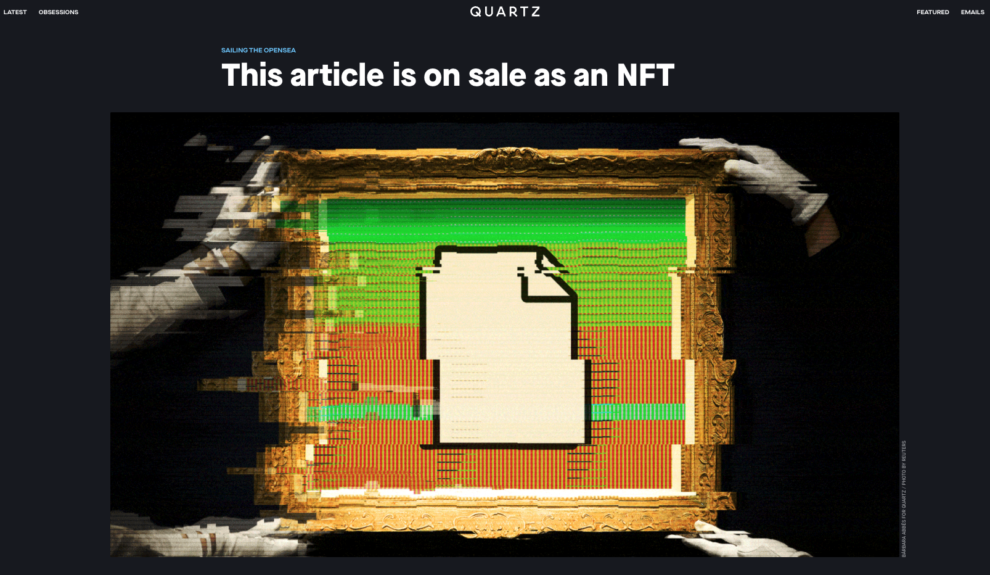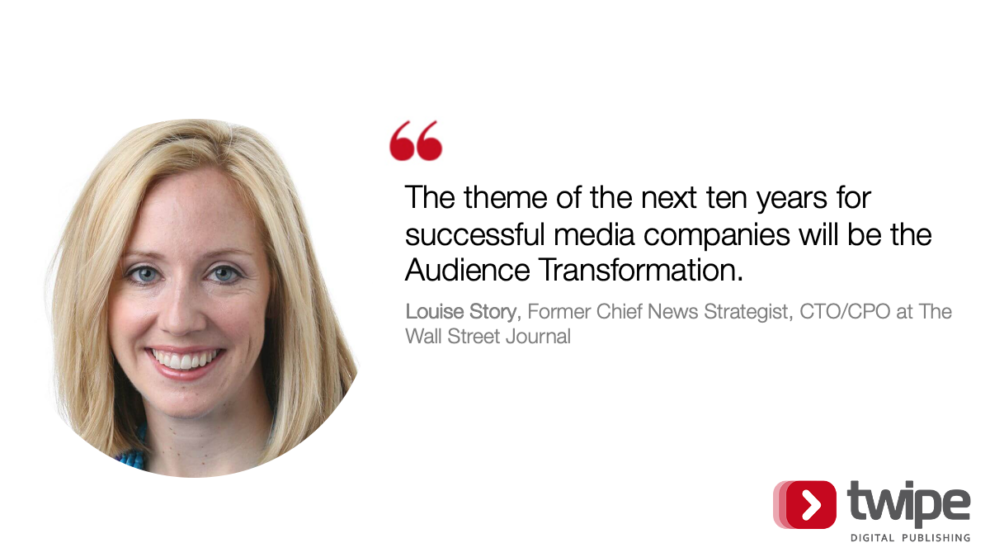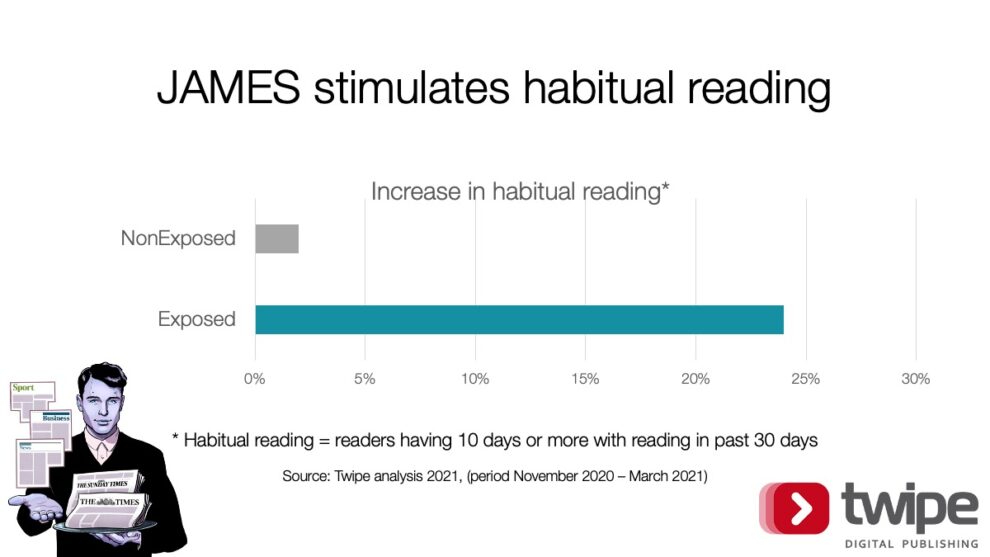Blog
5 themes that governed the news industry in 2021
2021 became the second year to be disrupted by COVID-19. Despite this, publishers continued to see renewed success and growth. Join us for a rundown of highlights from 2021 including the rise and fall of Clubhouse, the Substack revolution and the renewed customer obsession.
1. NFTs and AI taking off
2021 saw the first news publisher NFTs sold. Quartz became the first news organisation to sell a piece of text journalism as an NFT. This was a very creative move as the NFT itself was the news article advertising their first ever NFT.

Their move inspired The New York Times to run a similar campaign where they sold their first ever article published as an NFT for around $560,000.
Beyond the world of NFTs, AI has extended its’ role in publishing. Automation of processes has become more widespread to save time in the newsroom, personalisation algorithms are embraced by more publishers to drive subscriber engagement and robot journalism is a trend more news organisations are daring to experiment with. One recent example we saw was McClatchy who began to automate their high school sports results and provide subscribers with a new experience.
Recommended extra reading:
2. Audience obsession spreading through newsrooms
In her speech at the Digital Growth Summit, Louise Story argued that newsrooms are too focused on their content and not on their audience. Publishers must reclaim utility and fit into people’s lives by creating content that has relevance in readers’ daily decisions and routines. Her example of New York’s Turbovax was particularly pertinent.

This audience focus was particularly relevant in 2021 as publishers faced the challenge of retaining the “COVID bump”.
At the Mather Economic Symposium audience obsession was also a topic. Claire Overstall of The Economist presented 4 focuses for understanding audience behaviour: content, habit nudges, digital experience and pay/registration walls. These 4 focuses ensure that subscribers are getting maximum engagement with The Economist products.
Mayur Gupta explained that Gannett has started to focus on customer obsession as well, choosing user value over user traffic. This has been driven by their fundamental belief that the longest surviving brands have culture and a connection with their audience.
Recommended extra reading:
- The News Industry has to Stop Talking about “Digital Transformation”
- 3 types of newsreader and how to engage them
3. Shift to digital driven by paper prices and the planet
In 2020, publishers’ supply chains were disrupted and newspapers were forced to go digital due to the pandemic. This trend has continued in 2021 for 2 other main reasons.
The first of these is the increase of paper prices. This drove an increase in running costs for publishers. A shift in focus has seen paper mills producing greater amounts of card for packages, seeing white paper for newspapers in short supply. In France, this led to a 30% price increase in paper costs, with costs expected to rise by around 15% in January 2022. In Germany, publishers noticed a price increase also as a result of a rise of the minimum wage.
The second reason for this shift is the greater awareness of the impact of industries on the planet. Questions have been raised not only around printing and print distribution across the planet, but also on how digital products can work better for the planet. COP26 opened many people’s eyes to the sheer size of the challenges facing the planet, and many publishers followed suit. Some, such as The Salt Lake Tribune, have reduced their print offering to weekends, whilst others, such as The Economist, have stopped offering pure print subscriptions. This trend is a shift in the right direction from a planet perspective.
Recommended extra reading:
- Publishing and the Planet: Why it is time to take the relationship seriously
- 10 Takeaways for the Next 10 Years in News from Digital Growth Summit 2021
4. Newsletters continuing their meteoric rise
2021 saw newsletter hosting platform Substack become the 6th largest English-language news publisher worldwide. In November 2021, the newsletter platform hit 1 million paying subscribers.
Indie-newsletter growth has seen more journalists leave titles to go it alone, whilst figures from other industries such as politics have joined the newsletter trend. This has opened new dialogues, but questions remain, such as the evermore blurred line of “what is a journalist” and “how trustworthy can these sources be”.
Newsletter strategies have consolidated their place as a crucial habit-forming tool for publishers. NRC and the Daily Mail have seen significant growth in habitual readers for cohorts exposed to JAMES personalised newsletters (Contact our team to learn more).

Recommended extra reading:
- Why newsletters are key for habit formation
- NRC and Daily Mail share results from personalising emails with JAMES
5. Audio as a subscriber growth tool
Audio has been slowly bubbling towards the surface with podcasts in recent years. In 2021 this started to boil over. Whilst we have seen the demise of Clubhouse, live audio’s success has continued on bigger platforms with Twitter Spaces and Facebook Audio Rooms. There has also been some movement on smaller voicenote platforms including Beams and Racket.
Podcasts have also continued to be the craze with The Fix labelling 2021 as the year of podcasting. But the biggest thing in 2021 was the emergence of paid podcasts. This was not only for publishers, but both Apple and Spotify began to support paywalled podcasts.
In the Netherlands, NRC launched their own editorially curated podcast app featuring podcasts from across the world. The New York Times have launched the beta version of their audio app due to be fully launched next year. Publishers are still experimenting with how this fits in their subscriber strategies – as subscriber-only products or new acquisition channels – but the trend is here to stay.
At the Digital Growth Summit, Emma Tucker, Editor of The Sunday Times singled out audio as the most crucial platform for the future of news. This is because audio is where the youth consumes news. 62% of 13-39 years olds listen to podcasts. According to Spotify’s Culture Next Report, 62% of millennials and 52% of Gen Z said audio amplifies more diverse perspectives than traditional media. Publishers should leverage this as a strategic way to grow subscribers.
Recommended extra reading:
Other Blog Posts

Stay on top of the game
Subscribe to Twipe’s weekly newsletter to receive industry insights, case studies, and event invitations.
"(Required)" indicates required fields

